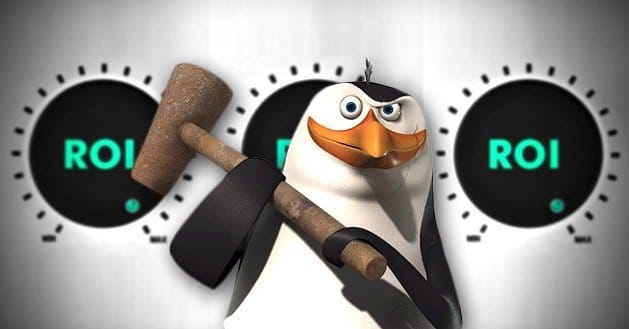 Written by ContentPowered.com
Written by ContentPowered.com
With any marketing effort, with any investment, the question you have to ask yourself sooner or later is “when will I see my investment returned?” How long does it take for that investment to start paying back the money you spent on it? Nowhere is this more true than in online marketing, where returns can be quick and fickle.
From the outside, it seems as though social media is a no brainer for marketing. Social media accounts are free to create and operate, aren’t they? Well, that’s never quite so simple. Sure, it’s free to register an account, but there can be all sorts of fees associated with setting it up. It might cost something to hire a graphic designer for your cover photo and profile picture. It might cost something to hire a copywriter to create compelling profile text. It very often costs something to hire a social media manager in-house or outsourced, to run your profiles for you. Of course, there’s also the advertising; paying for ads that drive traffic to your social media profiles is a constant expense.
Even at that, it’s all potentially such a low expense compared to other marketing channels that businesses see social media as a gold mine. All it takes is a handful of new conversions to bring in a positive ROI. So, how long does it take to bring in those returns?
The shocking truth is, only 39 percent of small businesses ever see a return on their social media investment. Among them, 57 percent place the value of that ROI at under $1,000. Unfortunately, these days social media interaction is so necessary that you can’t just do without. So the question changes. Instead of asking when you’ll see a return, how do you take steps to guarantee you’ll get a return at all?
Track the Right Metrics
There’s more to social media than money in and money out. You’re building a community, and that community has benefits beyond the monetary. You gain a brand reputation. You build trust in your name and your online presence. You build clout in the world of social media, and carry that influence to your website in the form of a better search ranking. Measuring all of this helps you see that you’re gaining benefit beyond pure conversions.
- Follower counts. Each social media site has its own metric for number of people who watch your page, are exposed to your posts and take part in your community. This metric tells you two things; first, the size of your community on social media, as compared to other locations such as your website. Second, by calculating the amount of money spent on a campaign and the number of new users it brings in, you can calculate the average cost of pulling in a new user.
- Content distribution. Depending on the site and the content, this metric varies in name, but you can easily call it shares. When you post a piece of content, how often is it shared? What content performs best, and what barely receives any recognition? Shares are important. If the average user on Facebook, for example, has 140 friends, each share is potentially exposure to an additional 140 people beyond your existing circle. More exposure means more chances at conversion, after all.
- Comments. You’re probably measuring comment metrics on your blog posts; why not measure them on your social media posts as well? Comments on social media are a measure of the engagement of your users; how invested they are in your brand. You can take steps to measure the effect of various types of posts, as well as when you posted and what media you included. Optimizing your content for comments builds trust and engagement, which lead to conversions and can bring in a better ROI.
- Traffic. It takes a little bit of creative monitoring, but you can track the traffic you pull in from each individual source on social media, from the platform to the individual link. Traffic, usage and lead statistics are just as important on social media as they are on your website itself.
Now that you know what you’re tracking, what can you tweak to improve these metrics?
- Optimize your social media profile information. Make sure your about sections are up to date and include visible links to your website. Include cross links between social media profiles; many users use more than one. Make sure to optimize your keywords in that content as well.
- Create a daily structure for social success. Rather than approaching each day as a new challenge to come up with new posts, have a checklist of posts to make. Share a post by an industry partner. Share a picture that relates to your goals. Promote a comment or question by a user and answer it publicly. Share a piece of content from your website. The routine varies from business to business, but the point is to have a routine in the first place.
- Don’t be afraid to automate what you can. Obviously, you can’t automate replies to your user comments. You can, however, schedule a queue of posts to be made throughout the day, leaving you free to handle user comments or make other posts on the fly.
- Make use of contests and giveaways. Facebook and Twitter are the best platforms for this, but you can rig up a contest on any platform. Give away something of value, particularly if it presents an opportunity to upsell to the person taking advantage of the contest. This works best if the item you’re giving away has a low cost to produce initially, so your ROI on each freebie is high.
- Make sure the content you post and share is valuable to your readers. If you’re a technology company an you’re sharing content about fishing, it better be about using your technology while fishing. Provide a link between the subject and your products to best capture the interest of your audience. For the most part, you’ll be doing this already in focusing the target of your blog posts. You may find certain niche topics are very popular among your audience. Note them and use them later for added value.
- Don’t forget to make use of powerful images and useful graphics. Infographics are highly valuable for a reason; they present useful information in a quick, easy to digest manner with an attractive layout and design. Come up with an image related to each post you make and make sure it’s the preview image of each post.
- Build your audience with a constant stream of content. You should make several posts each day; this goes back to the first step with the checklist. A regular stream of content means users always have something to see when they check your page. It gives them more opportunities to engage with your content, and it gives you more chances to entice them with a call to action.
Pulling a return from your social media investment may be more difficult than expected, but it’s not impossible. Eventually, as you build your audience and gather renown amongst your industry, you’ll find it easier to pull in new conversions. The force of reputation is not to be scorned; the trust you build through a social community can be quite powerful indeed.

